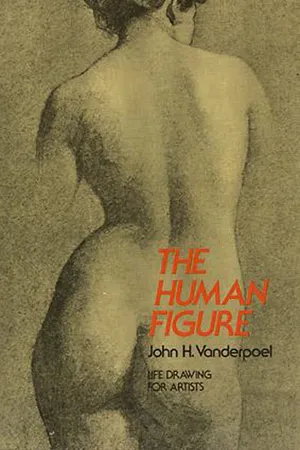
- 143 pages
- English
- ePUB (mobile friendly)
- Available on iOS & Android
eBook - ePub
The Human Figure
About this book
This great classic is still unrivalled for its clear, detailed presentation of thousands of fundamental features of the human figure. Every element of the body (such as the overhang of the upper lip; the puckering at the corners of the mouth; the characteristic proportions of the head, trunk, limbs, etc.; the tension between connected portions of the body; etc.) is carefully and concisely pointed out in the text. Even more helpful are the 430 pencil and charcoal drawings that illustrate each feature so that you are, in effect, shown what to look for by a master teacher.
The result is the only art instruction book which not only illustrates details of the body but directs your attention at every stage to a host of subtle points of shading, curvature, proportion, foreshortening, muscular tension, variations due to extreme age or youth, and both major and minor differences in the structure and representation of the male and female figure. Comprehensive discussions and drawings cover the eyes; nose, mouth and chin; ear; head, trunk, back and hips; neck, throat, and shoulder; shoulder and arm; hand and wrist; leg; foot; the complete figure; and other interdependent groups of structures. This is the human figure as the artist, art student, and art teacher must know it in order to avoid many deceptive errors unfortunately common in much modern portraiture, painting, and illustrative art.
The result is the only art instruction book which not only illustrates details of the body but directs your attention at every stage to a host of subtle points of shading, curvature, proportion, foreshortening, muscular tension, variations due to extreme age or youth, and both major and minor differences in the structure and representation of the male and female figure. Comprehensive discussions and drawings cover the eyes; nose, mouth and chin; ear; head, trunk, back and hips; neck, throat, and shoulder; shoulder and arm; hand and wrist; leg; foot; the complete figure; and other interdependent groups of structures. This is the human figure as the artist, art student, and art teacher must know it in order to avoid many deceptive errors unfortunately common in much modern portraiture, painting, and illustrative art.
Frequently asked questions
Yes, you can cancel anytime from the Subscription tab in your account settings on the Perlego website. Your subscription will stay active until the end of your current billing period. Learn how to cancel your subscription.
At the moment all of our mobile-responsive ePub books are available to download via the app. Most of our PDFs are also available to download and we're working on making the final remaining ones downloadable now. Learn more here.
Perlego offers two plans: Essential and Complete
- Essential is ideal for learners and professionals who enjoy exploring a wide range of subjects. Access the Essential Library with 800,000+ trusted titles and best-sellers across business, personal growth, and the humanities. Includes unlimited reading time and Standard Read Aloud voice.
- Complete: Perfect for advanced learners and researchers needing full, unrestricted access. Unlock 1.4M+ books across hundreds of subjects, including academic and specialized titles. The Complete Plan also includes advanced features like Premium Read Aloud and Research Assistant.
We are an online textbook subscription service, where you can get access to an entire online library for less than the price of a single book per month. With over 1 million books across 1000+ topics, we’ve got you covered! Learn more here.
Look out for the read-aloud symbol on your next book to see if you can listen to it. The read-aloud tool reads text aloud for you, highlighting the text as it is being read. You can pause it, speed it up and slow it down. Learn more here.
Yes! You can use the Perlego app on both iOS or Android devices to read anytime, anywhere — even offline. Perfect for commutes or when you’re on the go.
Please note we cannot support devices running on iOS 13 and Android 7 or earlier. Learn more about using the app.
Please note we cannot support devices running on iOS 13 and Android 7 or earlier. Learn more about using the app.
Yes, you can access The Human Figure by John H. Vanderpoel in PDF and/or ePUB format, as well as other popular books in Art & Techniques d'art. We have over one million books available in our catalogue for you to explore.
Information
Topic
ArtSubtopic
Techniques d'artTHE HEAD

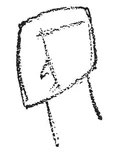
IN the head of the lower animal there are certain structural characteristics that obtain equally in the human head, and which, once appreciated, enable the student the more readily to understand the relationship of the planes that bound it. We find the same skeleton or bony structure upon which to build, the cranium or rounded receptacle enclosing the brain, the orbits, the cheek bones, the nasal bone and the jaw. The great difference is not found in kind but in degree. However, irrespective of the difference there may be between one animal and another, the difference between them collectively and the human being is so great, the gap so wide, that superficially considered, all trace of the lower animal is lost.
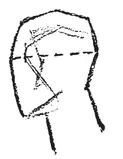
There are two radical structural differences to be mentioned: first, the relative position and the proportion of the lower to the upper part of the skull, and second, the relative position of the head to the body. The head of the animal is carried in a nearly horizontal position, whereas man carries it in a vertical position.
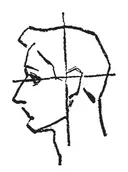
Taking the eye and ear as a median line from which to depart, their relative position being the same in man and animal, it will be noticed that above the line, the brain development in man makes for an upward enlargement of the top of the skull and a forward pressure of the frontal bone, placing the frontal bone at right angles, or nearly so, to the top of the head. Below the median line it will be observed that the large muzzle of the animal projects strongly from the skull with the nose well flattened upon it, placing the muzzle at right angles to the jaw, the lower jaw and embryo chin extending proportionately from the throat.

In proportion, then, the upper part of the human head is large above the median line and the head of the animal large below the median line.
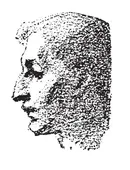
The change in proportions brings with it a change in the relative position of the parts. A line drawn through the length of the animals head runs diagonally through the median line, whereas in man it crosses it nearly at right angles; as the brain develops it rises vertically, and with its development the lower part of the head retires and falls directly under it.
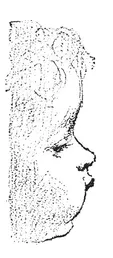
In the face of man, the differences are manifested in the well-nigh vertical and overhanging frontal bone, the chiseled, projecting nose, and the highly developed chin; in the animal these same forms are reduced to the low sloping head, the flat, fused nose and rudimentary chin.
It is in the middle and lower part of the human head that traces of the animal nature manifest themselves, even in the highly developed man. The plane upon which the nose rests partakes of the projecting muzzle in the animal and, as in the animal, the lower part of the face has a tendency to retire, but this tendency is modified by the developed and projecting chin.
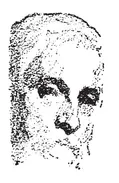
Having studied the component parts of the head in the shape of the features, and looked into the comparative form of the head in the animal and man, the next step will be the study of the construction of the head as a whole, through an analysis of the larger planes, as they bound and give it substance.

A pupil must learn early in the study of drawing to appreciate mentally all the planes that encompass the head, though to the physical eye from a given point of view only certain ones may be visible. This consciousness and understanding of the planes will enable the student the more readily to approach and comprehend the three essentials that characterize a strong drawing: first, the carriage of the head, or its action; second, its construction; third, the character and personality of the sitter. With thorough appreciation of the three requirements, accompanied by a simplicity of expression through a practiced hand, the student is well on the way to draftsmanship.
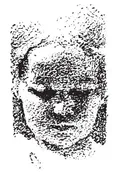
The head is composed of six planes, five of which are visible, while the sixth (the under surface) is mainly hidden by the entrance of neck and throat, leaving the under surface of the jaw the only portion of this plane intact. The other surfaces comprise the face or front plane, the back, the top of the head, and the two sides; the latter notably are the only ones that are alike.
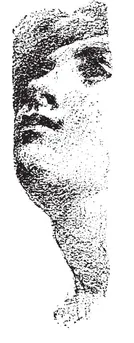
Fully to realize the existence of these planes, imagine a cube with all its corners and edges rounded. This will keep the sense of a solid and its planes before the mind’s eye. Further, take up a skull, and with a bit of chalk mark the detachment of these surfaces one from the other, and though at first in the living model the subtle curvature and fusing of one plane into the other will be puzzling, they can in this manner be placed, so that no matter what the students ocular point of view may be when drawing from the model he can not miss them.
When seen in profile the lines that define the proportions of the head, breadth to length, should first be placed; the breadth of the top first; next a long line for the front or face; another along the back and a fourth placed quite diagonally from base of skull along the jaw to end of chin. This diagram, somewhat of a diamond shape, though it gives the angles of the planes, pretends to do no more than to give the general proportions and location of the big planes. Each plane may now be subdivided so as to locate crown of head in the upper surface: the fullness of the back of the head as it projects beyond the neck; in the face separating brow or frontal bone from lower half of head; and in the under surface introducing the neck, which is placed well back of the center of the skull.
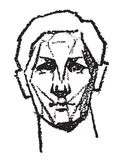
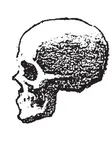
It will be observed now that the greatest breadth is across the brow to the fullest part of the back of head. This division marks the separation of the upper from the lower part of the head, each portion in its ascent and descent dec...
Table of contents
- Title Page
- Copyright Page
- Dedication
- FOREWORD
- Table of Contents
- DRAWING THE HUMAN FIGURE
- THE EYES
- THE NOSE
- THE MOUTH AND CHIN
- THE EAR
- THE HEAD
- THE BONY STRUCTURE OF THE TRUNK
- THE STUDY OF THE TRUNK
- THE TRUNK, FRONT AND BACK
- THE TRUNK, BACK AND HIPS
- NECK, THROAT AND SHOULDERS
- THE SHOULDERS AND CHEST
- THE SHOULDER AND ARM
- THE ARM, WRIST AND HAND
- THE HAND AND WRIST
- THE LEG
- THE FOOT
- THE COMPLETE FIGURE